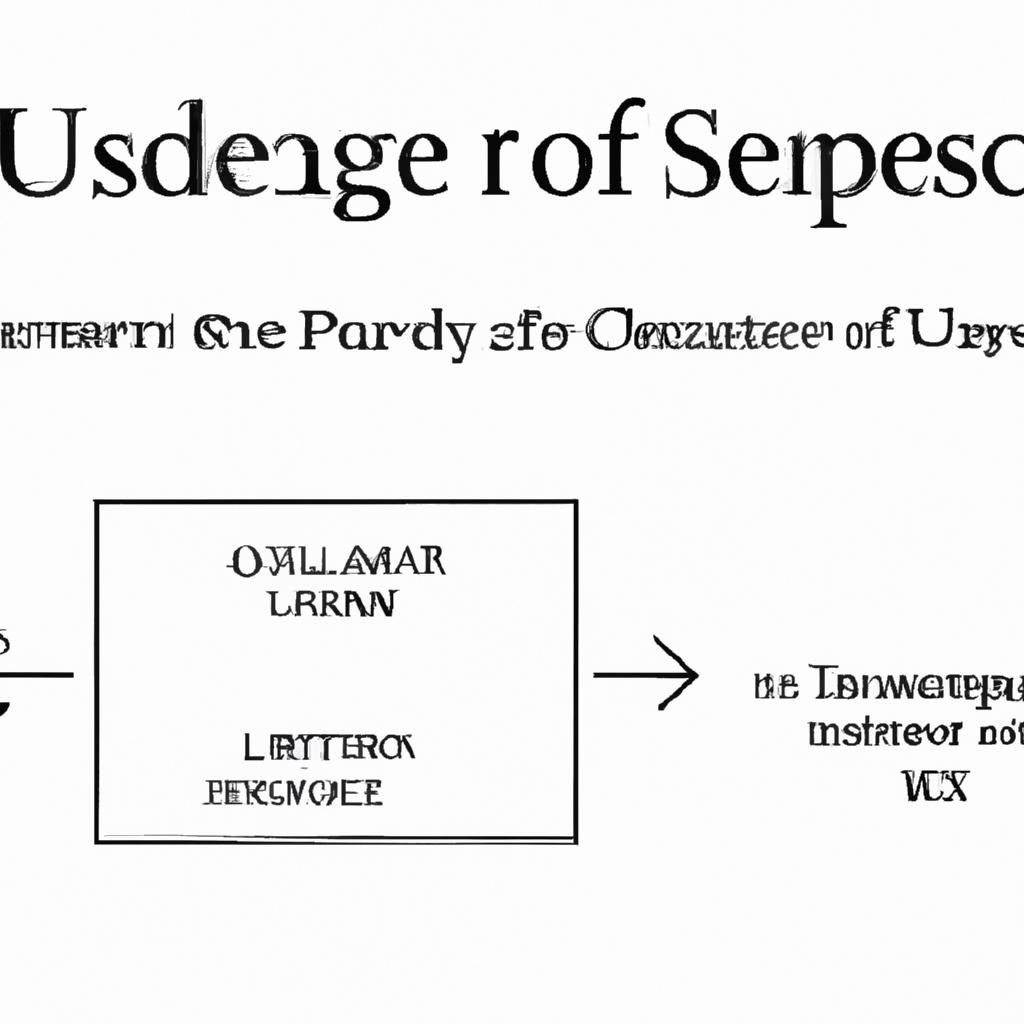In navigating the complex legal landscape surrounding the affairs of a deceased individual, one crucial yet often overlooked task is updating the address of the deceased person with the United States Postal Service (USPS). This seemingly mundane process holds significant legal implications and must be handled with precision to avoid potential complications in administering the deceased individual’s estate. At Morgan Legal Group, we specialize in estate planning, probate, elder law, Wills, and trusts, and understand the intricacies involved in managing such matters. In this article, we will delve into the importance of initiating a change of address with the USPS for a deceased person and provide guidance on navigating this essential step in the estate administration process.
Understanding the USPS Change of Address Process for Deceased Individuals
When a loved one passes away, it is essential to handle their affairs, including updating their mailing address to prevent any potential issues with mail delivery. can help ensure that their mail reaches the right destination.
It is important to follow these steps when completing a Change of Address for a deceased person:
- Notify the USPS: Contact the United States Postal Service to inform them of the individual’s passing and request a Change of Address form for deceased individuals.
- Provide necessary documentation: Submit the required documents, such as a death certificate and proof of your authority to act on behalf of the deceased, to complete the Change of Address process.
- Update important contacts: Notify banks, insurance companies, and any other relevant institutions of the change in address to ensure that important documents are received.

Important Considerations When Updating Address Information for a Deceased Person
When updating address information for a deceased person, it is crucial to follow certain guidelines to ensure a smooth transition. Firstly, contact the United States Postal Service (USPS) to inform them of the individual’s passing and provide the necessary documentation. This will prevent any mail from being delivered to the deceased’s address and help avoid any potential identity theft issues.
Next, update the address with any relevant financial institutions, insurance companies, government agencies, and subscription services. Make sure to notify all parties involved in a timely manner to prevent any delays or complications. It is also important to forward any mail that continues to be sent to the deceased’s address to the appropriate parties. By taking these steps, you can help safeguard the deceased’s estate and prevent any unnecessary stress during an already difficult time.
| Name | Contact |
|---|---|
| Social Security Administration | (800) 772-1213 |
| Department of Motor Vehicles | (212) 645-5550 |
| Insurance Companies | (877) 926-3355 |

Best Practices for Notifying USPS of a Deceased Person’s Change of Address
In the unfortunate event of a deceased person needing to change their address with USPS, it is essential to follow the best practices to ensure a smooth process. One of the first steps to take is to gather all necessary documents, including the death certificate and proof of legal authority to act on behalf of the deceased individual. This may include a copy of the will or a court-appointed Letters Testamentary.
Once you have the required documentation, it is important to fill out the USPS Change of Address form. This form can be completed online, in person at a post office, or through the mail. Make sure to provide accurate information about the deceased person, including their full name, old address, new address, and date of passing. Additionally, it is recommended to notify any relevant parties of the address change, such as banks, insurance companies, and other service providers to prevent mail from being delivered to the old address. By following these best practices, you can ensure that the deceased person’s change of address is processed efficiently and effectively.
| Name | Address | Date of Passing |
|---|---|---|
| John Doe | 123 Main St. | October 15, 2021 |

Navigating the USPS Change of Address System After the Passing of a Loved One
When a loved one passes away, navigating the USPS Change of Address system can be a complex and emotional process. It is important to ensure that their mail is forwarded to the appropriate address while also handling sensitive information with care.
Here are some steps to guide you through the process:
- Obtain a copy of the death certificate: You will need this document to prove the passing of your loved one when requesting a change of address.
- Notify USPS of the change: Contact the USPS Change of Address service either online, by phone, or in person to update the mailing address of the deceased individual.
- Update important contacts: Make a list of important contacts that should be notified of the change of address, such as banks, insurance companies, and subscription services.
Q&A
Q: What is the process for changing the address of a deceased person with USPS?
A: The process involves filling out a change of address form on behalf of the deceased individual.
Q: Can a family member or executor request a change of address for a deceased person?
A: Yes, as long as they provide the necessary documentation and information.
Q: What documentation is required to change the address of a deceased person?
A: The requester will need to provide proof of the deceased person’s passing, such as a death certificate.
Q: Can the change of address be temporary or permanent for a deceased person?
A: The change of address can be temporary or permanent, depending on the circumstances.
Q: Are there any fees associated with changing the address of a deceased person?
A: There may be a small fee for processing the change of address request.
Q: How long does it take for the change of address to take effect for a deceased person?
A: The change of address typically takes 7-10 business days to take effect.
Q: Can the change of address be done online or does it need to be done in person?
A: The change of address can be done online or in person at a local post office.
Q: What happens to mail that is still sent to the deceased person’s old address?
A: The mail will be forwarded to the new address provided in the change of address request.
Q: Is it possible to cancel or update the change of address request for a deceased person?
A: Yes, the requester can update or cancel the change of address request at any time.
Wrapping Up
In conclusion, navigating the process of a change of address with the USPS for a deceased loved one can be a challenging and emotional task. While it may feel overwhelming at times, remember that you are not alone in this process. Take the time to gather all necessary documents and information, and reach out to the USPS for assistance as needed. By honoring your loved one’s memory and taking care of their affairs with care and attention to detail, you can ensure a smooth transition during this difficult time. We hope this article has provided you with helpful guidance and support as you navigate this important step.
 Change of Address USPS for Deceased Person: Everything You Need to Know
Change of Address USPS for Deceased Person: Everything You Need to Know
Losing a loved one is a difficult and emotional experience, and amidst the grieving process, there are important practical matters that need to be taken care of. One of these is updating the address of the deceased person with the United States Postal Service (USPS).
When someone passes away, their mailing address needs to be changed to ensure that any important mail does not end up in the wrong hands. This can include bills, bank statements, and even government correspondence. In this article, we will guide you through the process of changing the address of a deceased person with USPS and provide you with some helpful tips to make the process smoother.
Why is it Important to Change the Address of a Deceased Person with USPS?
Changing the address of a deceased person with USPS is important for several reasons:
1. To prevent identity theft: Identity theft is a growing concern and it is important to take necessary steps to protect the identity of a deceased person. Changing their address ensures that sensitive information is not delivered to their old address, where it could potentially be accessed by unauthorized individuals.
2. To avoid missed correspondence: In the case of bills and statements, it is important to ensure that they are delivered to the correct address to avoid any missed payments or important information.
3. To settle any remaining financial matters: Updating the address with USPS helps in settling any remaining financial matters, such as insurance policies or refunds, as well as addressing any outstanding debts.
How to Change the Address of a Deceased Person with USPS
The process of changing the address of a deceased person with USPS may seem daunting, but it can be easily accomplished by following these steps:
1. Notify USPS of the Death: The first step in the process is to notify USPS of the death by filling out a form available on their website or by visiting your local post office. The form requires information such as the name and address of the deceased, the date of their passing, and the name and address of the next of kin or executor of the estate.
2. Provide Proof of Death: Along with the completed form, you will be required to submit a proof of death, such as a death certificate, obituary, or funeral program. This is necessary for verification purposes and to prevent any fraudulent address changes.
3. Decide on Forwarding or Stopping Services: USPS offers two options for handling the mail of a deceased person. The first is forwarding, where all mail is redirected to the address of the next of kin or executor. The second is to stop mail delivery altogether, which is recommended if the next of kin or executor does not reside at the same address as the deceased.
4. Pay the Applicable Fees: There is a fee for changing the address of a deceased person with USPS. The fee for forwarding services is $1.05 per week for the first 12 weeks. After that, standard forwarding rates apply. There is no fee for stopping mail delivery.
5. Update Mailing Addresses: Once you have completed the form and paid the applicable fees, it is important to update the mailing addresses of any relevant organizations such as banks, credit card companies, and government agencies. This will ensure that any future mail is delivered to the correct address.
Helpful Tips for Changing the Address of a Deceased Person with USPS
1. Notify Relevant Organizations: In addition to notifying USPS, it is important to inform other organizations of the death and update their mailing addresses. This can include banks, credit card companies, insurance companies, and subscriptions.
2. Consider Using USPS’ Premium Forwarding Service: If you opt for the forwarding service, consider using USPS’ Premium Forwarding Service. This service allows the mail of a deceased person to be forwarded on a weekly basis for up to one year. This can be especially helpful when handling the estate of the deceased.
3. Temporarily Suspend Newspaper Subscriptions: If the deceased person had a newspaper subscription, it is advisable to temporarily suspend it or cancel it altogether. This will avoid any unnecessary charges and ensure that newspapers are not delivered to the old address.
4. Update Contact Information for Government Benefits: If the deceased person was receiving any government benefits, such as Social Security or Medicare, it is important to update their contact information with the respective agencies to avoid any disruptions in benefits.
In Conclusion
The process of changing the address of a deceased person with USPS can be overwhelming, but it is an important task that needs to be taken care of. By following the steps outlined in this article and utilizing the helpful tips provided, you can ensure that the mail of the deceased is handled properly and their identity is protected.
Remember, notifying USPS is just the first step. It is also important to update the addresses with all relevant organizations to avoid any missed correspondence. By handling this matter effectively, you can alleviate some of the stress and burden of losing a loved one and focus on the grieving process.

